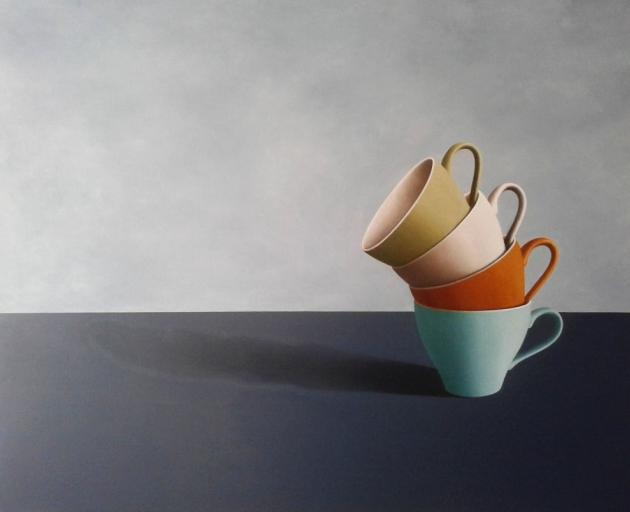
''Selected Works'', Raquel Clarke (Wanaka Fine Art Gallery)
Raquel Clarke is an artist who can imbue a little bit of magic into her canvases.
The works are very beautiful and highly textural, created with paint and brush but possessing some of the visual qualities of sculpture and tapestry.
Clarke applies paint to the foreground of her landscapes with a generous hand, the dollops of colour resulting in three-dimensional fields of flowers seeming to glow with life and energy, the stems weaving and waving in an imaginary breeze.
The background slowly drifts into smoother, flatter strokes, investing the settings with a smoky-looking romanticism.
Yellow Lupins and Purple Lupins are equally spectacular in that respect, while the setting sun casts a particularly lustrous glow over the field of Daisies.
Ocean's Deep is more abstracted than the landscapes, but still perfectly indicative of its subject. Varying shades of colour, from purple to orange, are used to depict the movement of the waves and the scatter of light on the water.
Up close, each individual stroke can be seen, as intricate and distinct as threads in embroidery. Knowledge is a larger leap into abstraction, an explosion of colour and vibrancy.
The latter two works are eye-catching and fascinating, but it is the flower paintings that stand out as something quite remarkable.

''Hakataramea Valley'', Nigel Wilson (Hullabaloo Art Space, Cromwell)
Nigel Wilson's latest exhibition was inspired by a road trip to Christchurch and a decision to divert towards Hakataramea Valley.
The side trip was not without incident, but also offered up breathtaking views of the valley, which Wilson has since expressed through paint.
The collection features mostly large canvases in earthy tones of gold, yellow and brown, contrasted against the glorious blue and misty white of the sky.
Wilson's style is both subtle and energetic, the rough brushstrokes blending together to create a slightly blurred appearance, like a landscape in a dream, or the imprecise, composite image of a memory, when the mind recalls certain colours, textures, sounds and smells, rather than perfect detail.
The numbered, untitled works track Wilson's journey through the valley, following the curving road and winding river, capturing the moving shadows of the sun as it beams through low-lying cloud.
There is a sense of warmth and affection in the paintings, Wilson's respect for and love of the land shining through in every stroke.
The road indicates a human presence, but it is very much the untouched, wild nature of the landscape that takes precedence over the minor attempts of mankind to forge a path through it.

''New Works'', Peter Miller (Gallery Thirty Three, Wanaka)
Still-life artist Peter Miller aims to show the beauty in simplicity, and succeeds admirably with his latest collection ''New Works''.
At face value, the exhibition is a series of straightforward studies of teacups and milk jugs, rendered with striking, sleek austerity.
However, Miller's clever composition and the careful balance of contrasting warm and cool colours adds layers of interest and depth to the apparent minimalism.
Crown Lynn - Made in New Zealand and Crown Lynn - NZ place a teetering tower of cups on an otherwise empty surface, the cups arching forward to cast a shadow, seeming to be in perpetual danger of toppling and breaking.
Green with Envy features a perfectly spaced line of cups in brownish-green tones, breaking the monotony and drawing the eye with one single maroon cup, the colour almost shockingly bold and vibrant against an otherwise subdued palette.
Miller demonstates his eye for detail in We Are Family, a charmingly old-world study of a pitcher and miniature milk jug.
The surface of the pitcher is glossier than the matte cups, absorbing the light and revealing an intriguing glimpse of reflected shapes.
The rim is faintly discoloured with age and use, and both vessels bear a hairline crack, signs that they are functional objects, created for practical purpose rather than ornamentation.
by Laura Elliot












